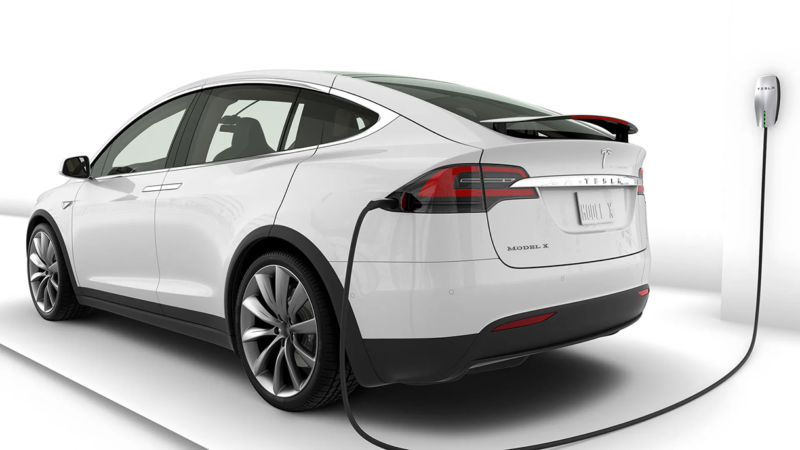Tesla Supercharger vs. Competitors: Which Charging Network Is the Fastest?
October 25, 2024

As electric vehicles (EVs) become more popular, the availability and speed of charging networks are key factors for drivers looking to make the switch from gasoline-powered cars. Tesla has long been a leader with its proprietary Supercharger network, but competitors are rapidly expanding their own fast-charging infrastructure. In 2024, the race to build the fastest, most reliable charging network is heating up.
In this article, we’ll compare Tesla’s Supercharger network to its main competitors, including Electrify America, Ionity, and EVgo, to determine which network offers the fastest charging times and the best user experience.
1. Tesla Supercharger: The Industry Pioneer
Tesla’s Supercharger network has been a game-changer in the EV industry, providing Tesla drivers with access to fast, reliable charging across the globe. As of 2024, Tesla operates over 45,000 Superchargers worldwide, offering unparalleled coverage and convenience for Tesla owners.
Charging Speed: Tesla’s latest V3 Superchargers can deliver up to 250 kW of power, allowing drivers to add about 200 miles of range in just 15 minutes. Tesla’s proprietary system ensures that the charging process is smooth and optimized specifically for Tesla vehicles.
Why It Matters: Tesla’s Supercharger network has the advantage of being highly integrated with Tesla vehicles, offering seamless navigation to nearby stations, real-time charging availability, and fast charging speeds that keep long road trips efficient.
2. Electrify America: Rapid Expansion and Ultra-Fast Charging
Electrify America, a subsidiary of Volkswagen, has been rapidly expanding its charging network across the United States. With over 3,500 charging stations and growing, Electrify America aims to rival Tesla’s Supercharger network by offering ultra-fast charging at key locations.
Charging Speed: Electrify America’s ultra-fast chargers can deliver up to 350 kW of power, making them some of the fastest chargers available. At these speeds, compatible EVs can gain 200 to 300 miles of range in just 20 minutes. However, not all EVs are capable of charging at these peak speeds, which may limit the network’s effectiveness for certain drivers.
Why It Matters: Electrify America’s ultra-fast charging capabilities make it a strong competitor to Tesla, particularly for drivers of non-Tesla vehicles. The network’s rapid expansion also makes it a convenient option for long-distance travel.
3. Ionity: Europe’s Answer to Tesla
Ionity is a European fast-charging network that has been developed through a partnership between BMW, Mercedes-Benz, Ford, and Volkswagen. Ionity focuses on providing ultra-fast charging for EV drivers across Europe, with over 400 charging stations and plans for further expansion.
Charging Speed: Ionity chargers offer up to 350 kW of power, allowing drivers to charge compatible EVs in about 20 minutes. With a focus on delivering fast charging along major highways, Ionity is designed to make long-distance travel in Europe more accessible for EV drivers.
Why It Matters: Ionity’s focus on ultra-fast charging and its strong presence in Europe make it a leading option for European EV drivers. Its high charging speeds and partnerships with major automakers give it an edge in the European market.
4. EVgo: Urban Fast Charging for City Dwellers
EVgo operates one of the largest public fast-charging networks in the United States, with a focus on urban areas. EVgo’s chargers are often found in city centers, shopping malls, and other convenient locations, making it ideal for drivers who need quick access to fast charging in densely populated areas.
Charging Speed: EVgo offers chargers with speeds up to 350 kW, although most of its chargers range from 50 kW to 150 kW. While its charging speeds may not match Tesla’s or Electrify America’s at all locations, EVgo’s urban focus makes it a convenient choice for city drivers.
Why It Matters: For urban EV drivers, EVgo’s network offers reliable fast charging in locations where other networks may not be as prevalent. Its partnership with companies like GM and Nissan further expands its reach.
5. Comparing the Charging Networks
When comparing Tesla’s Supercharger network with competitors like Electrify America, Ionity, and EVgo, several factors come into play, including charging speed, coverage, and user experience. Here’s a quick overview:
Charging Speeds (Peak Power Output):
- Tesla Supercharger V3: Up to 250 kW
- Electrify America: Up to 350 kW
- Ionity: Up to 350 kW
- EVgo: Up to 350 kW (urban areas)
Coverage:
- Tesla Supercharger: 45,000+ chargers worldwide, exclusive to Tesla vehicles (with plans to open to non-Tesla vehicles in some regions)
- Electrify America: 3,500+ chargers in the U.S.
- Ionity: 400+ chargers across Europe
- EVgo: 800+ chargers in urban areas across the U.S.
Charging Cost:
- Tesla Supercharger: Competitive rates, especially for Tesla owners with charging credits
- Electrify America: Pricing varies by location, with subscription options for discounted rates
- Ionity: Premium pricing, but often included in automaker incentives
- EVgo: Pay-as-you-go or subscription options available
6. User Experience and Convenience
User experience is a critical factor when choosing a charging network. Tesla’s Supercharger network stands out for its seamless integration with Tesla’s navigation system, providing real-time updates on charging station availability and the best routes for recharging. Tesla’s proprietary plug and “plug-and-charge” system make the charging process simple and hassle-free.
Electrify America and Ionity also offer high-speed charging, but drivers of non-Tesla vehicles may face compatibility issues or need to bring their own charging adapters. Additionally, while Electrify America and Ionity offer ultra-fast charging, some EV models may not be able to take full advantage of the 350 kW speeds, limiting the effectiveness of these networks for certain drivers.
EVgo’s urban-focused network is convenient for city dwellers, but its slower charging speeds in some locations may make it less appealing for long-distance travelers.
7. The Future of Fast-Charging Networks
As the EV market continues to grow, charging networks will need to expand and improve to meet increasing demand. Tesla has announced plans to open its Supercharger network to non-Tesla vehicles in certain regions, which could significantly broaden its appeal. Electrify America and Ionity are both expanding their networks rapidly, with plans to increase the number of charging stations and improve charging speeds.
Additionally, as battery technology improves and more EVs become capable of handling ultra-fast charging, the competition between charging networks is likely to intensify.
Conclusion
When it comes to fast-charging networks, Tesla’s Supercharger system remains the gold standard for its seamless user experience, widespread coverage, and fast charging speeds. However, competitors like Electrify America, Ionity, and EVgo are closing the gap, offering ultra-fast charging and expanding their networks to meet the needs of non-Tesla EV drivers.
Ultimately, the best charging network for you will depend on the type of EV you drive, where you live, and how often you take long trips. For Tesla owners, the Supercharger network is still the most convenient and reliable option, while Electrify America and Ionity offer strong alternatives for drivers of other EV brands.






